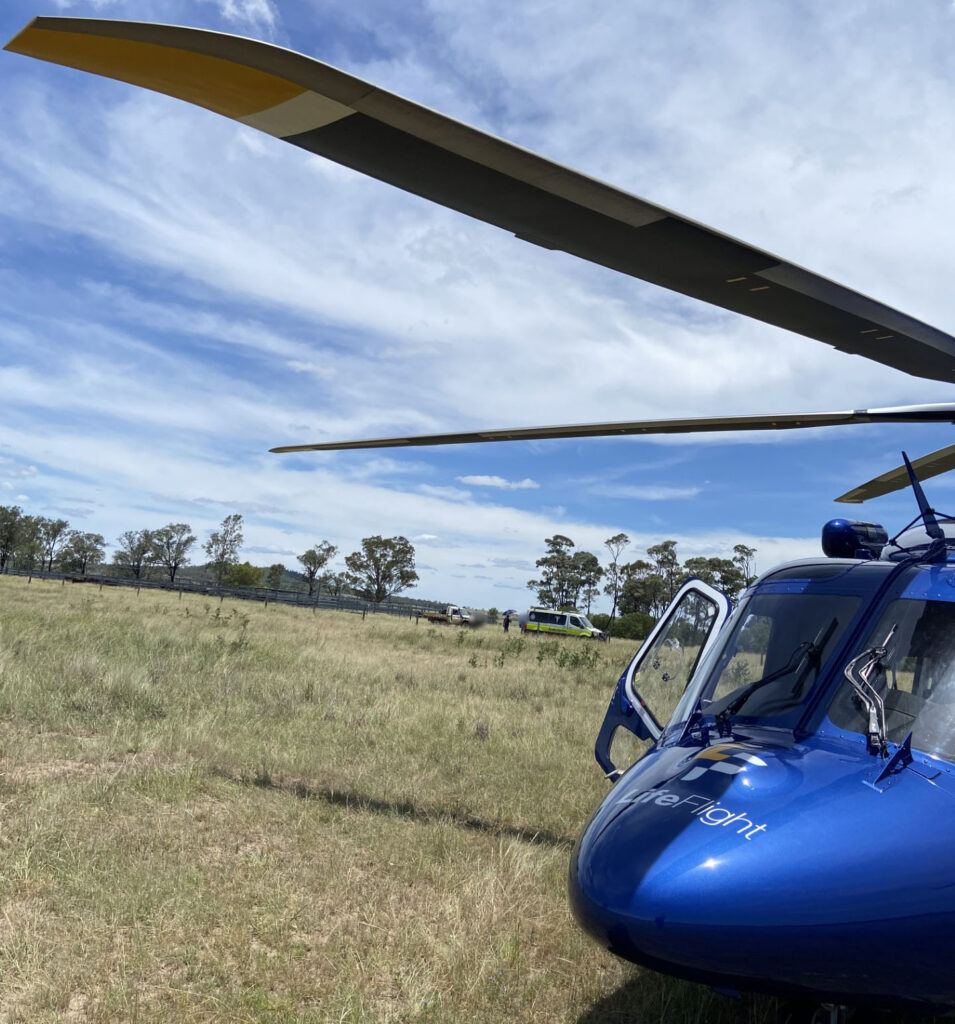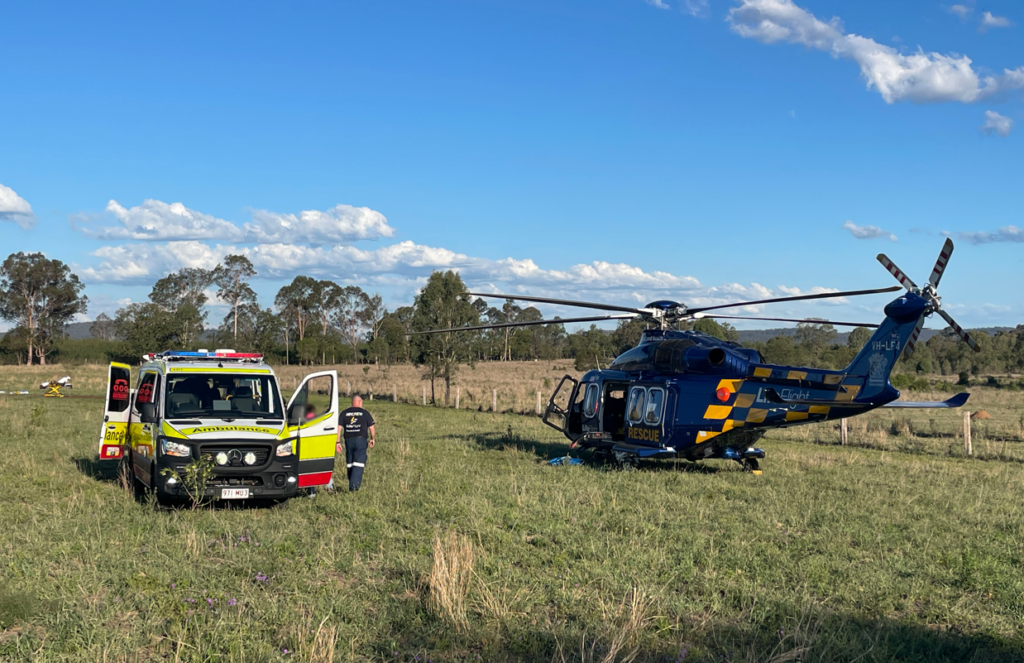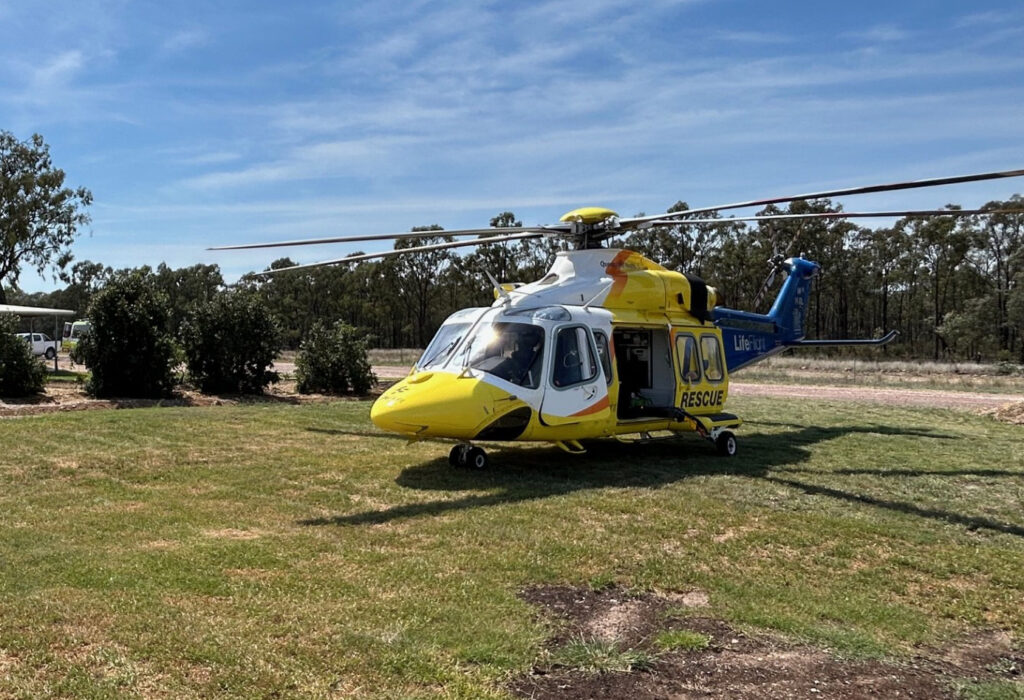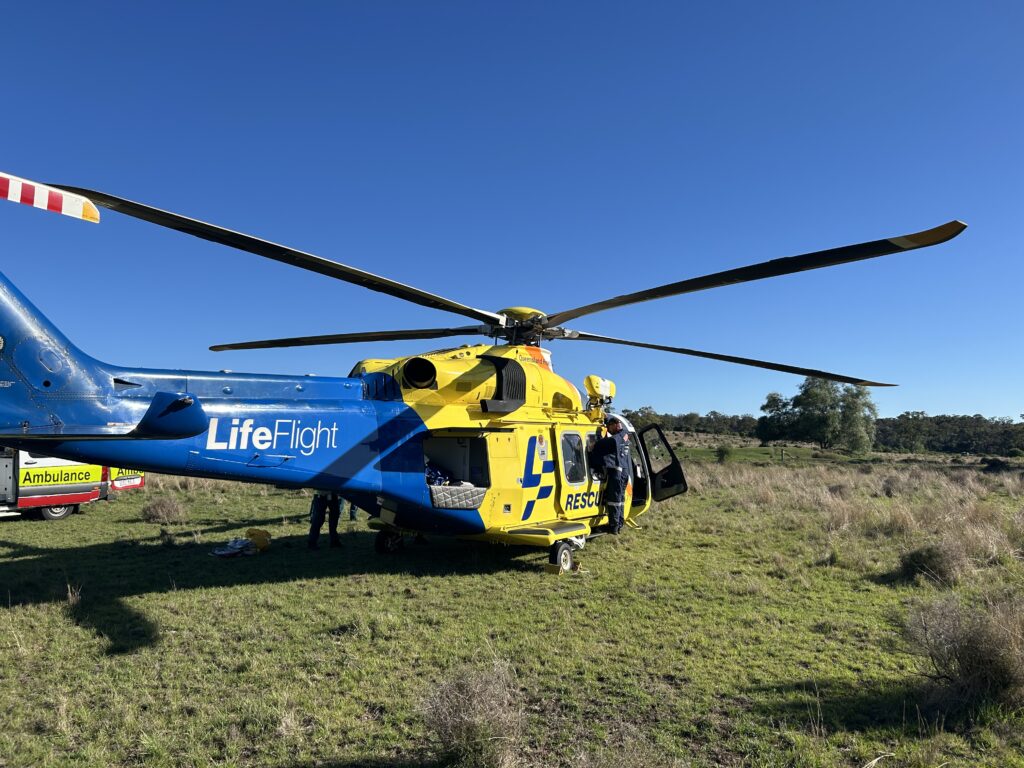Key Stats: FY25
- 8,497 people helped – up 3.9% on FY24
- A patient helped every 62 minutes
- Helicopter flying hours increased 15% to 5,940 hours
- Toowoomba was the busiest base again helping 932 people
- Total helicopter missions increased 10.5% to 3,372 (includes training)
- Townsville, Brisbane and Singapore jets helped 1,050 people – up 10.7% on FY24
- More than 90,000 people helped since start of LifeFlight in 1979
Soaring demand for fixed wing aeromedical services combined with an investment in new helicopters, base builds and training has propelled LifeFlight to another record year.
Data released this week shows its medical teams, helicopter and jet fleets helped 8,497 people in FY25 – 3.9 per cent higher than the previous year.
LifeFlight’s Challenger 604 jets based in Townsville, Brisbane and Singapore, airlifted 1,050 people with Townsville’s number increasing a staggering 86 per cent to 601.
LifeFlight’s helicopter crews, operating from bases on the Sunshine Coast, Bundaberg, Mount Isa, Toowoomba, Roma, and Brisbane, clocked up 3,732 missions over the year.
There were 817 people helped from motor vehicle accidents, 15 per cent higher than FY24, while people airlifted with cardiac problems were 4 per cent higher at 1,075 and patients with animal-related injuries were up 5 per cent to 166.
LifeFlight embarked on new base builds at Mt Isa and the Sunshine Coast, welcomed three new AW139 helicopters to its fleet, and inked a $250 million partnership with Italian aircraft manufacturer Leonardo.
A new aeromedical precinct is also under construction at Brisbane Airport and will bring together the state’s aeromedical healthcare providers under one roof and connect more regional, rural, and remote Queenslanders to major hospitals and life-saving medical care. The Brisbane-based crew helped 562 people and clocked up 1,270 flying hours, while the jets aided 440 people.
LifeFlight Chief Operating Officer Lee Schofield, said the year was one of the most significant in the not-for-profit’s history.
“Every hour we are called upon to airlift Queenslanders in distress, whether it’s hikers stranded on mountains, capsized boaties kilometres out to sea, or people needing urgent medical attention in major hospitals,” Mr Schofield said.
“It’s a mission our aeromedical crews carry out with great dedication with the goal of bringing equity in healthcare no matter where and when people need us.
“My sincere thanks go to all LifeFlight’s staff for the incredible work they do. Team effort and coordination across all our work groups is key to providing the world class standard of care and ensuring equity of health care in regional communities.
“To continue to meet this objective, we’re evolving our organisation with the best aircraft, advanced bases and facilities, and cutting-edge training unmatched in our region.
“Over the next year we’ll be opening new bases on the Sunshine Coast and Mt Isa as well as adding new aircraft to better service those regions.”
Mr Schofield said LifeFlight’s growth was possible due to the support from the community, donors and philanthropy, government and new commercial partnerships.
“This generosity and support enable LifeFlight to keep helping more people each year as demand for our services continues to increase,” he said.
LifeFlight’s aeromedical helicopter crews completed a number of highly complex missions during the year.
August last year recorded the highest number of patients helped at 788, more than any other single month in the organisation’s 46-year history.
In October the Sunshine Coast crew rescued Gold Coast University student Maverick Robbins after he crashed his paraglider into a sandstone cliff on Rainbow Beach.
The Mount Isa aeromedical crew rescued a couple and their two dogs after their 4WD washed away in crocodile-infested flood waters in North West Queensland in December.
In June the Bundaberg helicopter airlifted four people after their boat sank off the coast, forcing the crew to take shelter on Hoskyn Island.
Toowoomba attended multiple call outs to rescue injured and stranded hikers, which included winching a man from the Main Range National Park and another hiker after he set off a personal distress beacon in the Scenic Rim region.
People helped by mission/injury type:
- Inter-facility transfer – 6,716 (6,565) +2.3%
- Cardiac – 1,075 (1,033) +4%
- Motor vehicle accidents – 817 (710) +15%
- Animal related – 166 (158) +5%
- Search and rescue – 37 (59) -37%
LifeFlight’s fleet is available 24 hours a day, 365 days a year and is comprised of four air ambulance jets and 20 rotary wing aircraft – eight of which are dedicated to the Emergency Helicopter Network in Queensland via a 10-year service agreement with the Queensland Government.
Medical teams work onboard aircraft from eight bases in Mount Isa, Townsville, Bundaberg, Sunshine Coast, Toowoomba, Roma, Brisbane and Singapore, directly servicing an area of 1.85 million square kilometres.
Crews support search and rescue efforts across 53 million square kilometres of land and sea for the Australian Maritime Safety Authority.
LifeFlight’s Brisbane Airport base accommodates two air ambulance jets, with two other jet bases in Townsville and Singapore to ensure long-distance fixed wing aeromedical coverage.
Much of LifeFlight’s aeromedical work involved Inter-Facility Transfers (IFT) or moving patients between medical facilities. This ensures all communities have equal access to the best possible healthcare, no matter where they live.
LifeFlight Medical Director Dr Jeff Hooper, said the breadth of the missions demonstrated capability to perform complex procedures under immense pressure.
“Our aeromedical teams provide advanced care under extremely challenging circumstances,” Dr Hooper said.
“That could be treating patients on scene after serious car crashes, stabilising patients mid-air, rescuing people stranded in the ocean, or winching down a paramedic to hikers stranded on the side of a cliff face.
“This rapid aeromedical intervention is often the difference between life and death and comes after our crews undertake intensive training at the LifeFlight Training Academy, which prepares them for any situation they may face in the field.”
Dr Hooper said a key part of LifeFlight’s mission was the development and delivery of its free First Minutes Matter emergency trauma training workshops which trained 775 people over 80 courses through the year.
“This incredible initiative helps to build community resilience by giving participants the practical skills to manage life-threatening events such as motor vehicle accidents, farming incidents, stroke and snake bites.”
LifeFlight has helped more than 90,000 people since its inception in 1979.
For more information on First Minutes Matter visit First Minutes Matter Program – LifeFlight.










